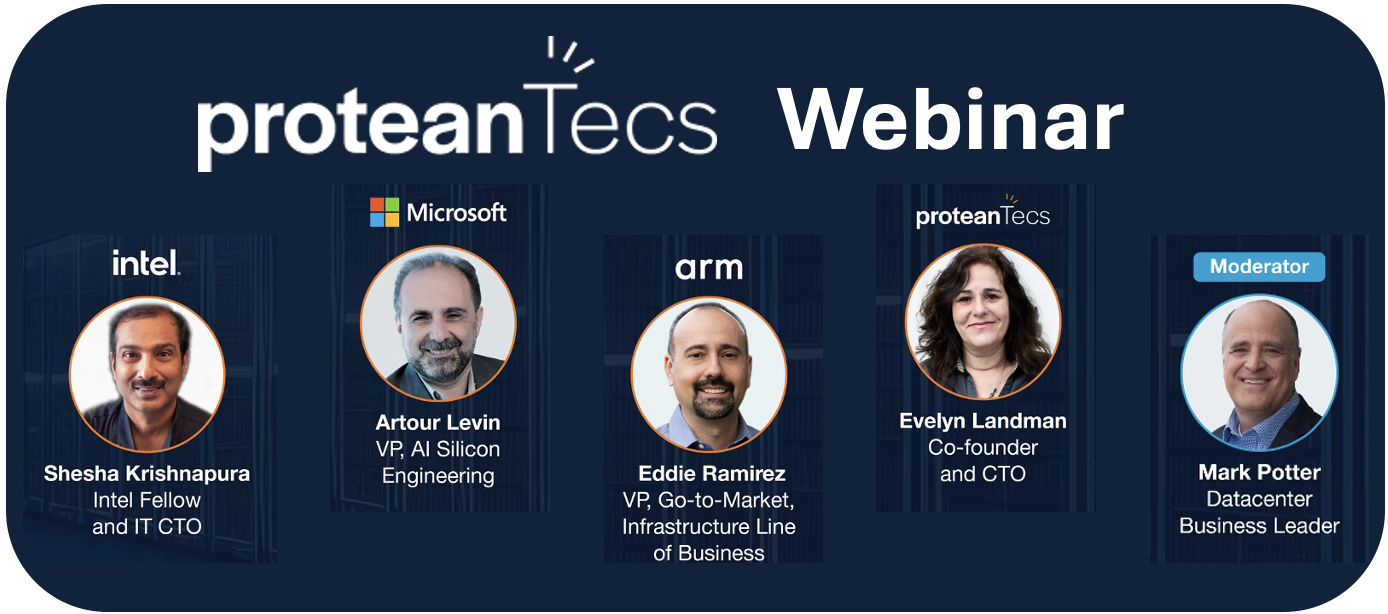
We all know power and energy management is a top-of-mind item for many, if not all new system designs. Optimizing system power is a vexing problem. Success requires coordination of many hardware and software activities. The strategies to harmonize operation for high performance and low power are often not obvious. Much work is going on here. Data center design is at the heart of the problem as the cloud has created massive processing capability with a massive power bill. You need to look at the problem from multiple points of view to make progress. A recent webinar from proteanTecs brought together a panel of experts who look at this problem from multiple points of view. The insights they offer are significant, some quite surprising and counterintuitive. Read on to get a better understanding of navigating the power challenges of datacenter infrastructure.
The Webinar
proteanTecs is a unique company that focuses deep data analytics through on-chip monitoring. You can learn about the company’s technology here. Recently, proteanTecs announced a power reduction solution that leverages its existing sensing and analytics infrastructure. I covered that announcement here. So, this combination of solutions around power optimization give the company a broad and unique perspective.
In a recent webinar, proteanTecs brought together a group of distinguished experts from A-list companies who are involved in various aspects of data center design. The insights offered by this group are quite valuable. A link is coming so you can get all the information from the panel directly. Let’s first review some of the key take-aways.
The Panel
The panelists are shown in the graphic at the top of this post. I will review each panelist’s opening remarks to set the stage for what follows. Going from right to left:
Mark Potter moderated the panel. He has been involved in the data center industry for over 30 years, much of that time at Hewlett Packard Enterprise and Hewlett Packard Labs, where he was Global CTO and Director. Today, Mark is involved in venture capital and is on the advisory board of proteanTecs. The moderator is a key role in an event like this. Mark is clearly up to the challenge of guiding the discussion in the right direction, uncovering significant insights along the way.
Evelyn Landman, Co-Founder and CTO at proteanTecs. Evelyn has broad responsibility for all proteanTec solutions across the markets the company serves. She pointed out that new workloads are creating new demands at the chip and system level. While advanced technology remains important, density requirements are forcing a move to chiplet-based design. There is also a focus on reducing operating voltage to save power, but this brings a new set of challenges.
Eddie Ramirez, VP Go-To-Market, Infrastructure Line of Business at Arm. Eddie focuses on working with Arm’s substantial ecosystem to build efficient semiconductor solutions for the cloud, networking, and edge markets. Eddie discussed the exploding size of the user base as driving compute power challenges. Everyone wants to do more with larger data sets, and AI is driving a lot of that.
Artur Levin, VP AI Silicon Engineering at Microsoft. Artur and his team focus on developing the most efficient and effective AI solutions. Artur also sees unprecedented growth in compute demands. Thanks to new AI algorithms, he is seeing new forms of compute infrastructure that previously did not exist. Cooling becomes a system and silicon challenge. The mandate for sustainability will also impact the approaches taken.
Shesha Krishnapuria, Fellow and IT CTO at Intel. Shesha has the broad charter of advancing data center design at Intel and throughout the industry for energy and space efficiency. He has focused on this area for over 20 years. Shesha pointed out that over the past 20 years Intel chip computing for data centers has grown over 140,000 percent. An incredible statistic. Looking ahead, this growth is likely to accelerate due to the widespread use of GPUs for AI applications.
With this backdrop of power and cooling problems that are difficult and getting worse, Mark began exploring strategies and potential solutions with the panel. What followed was a series of insightful and valuable comments. You should invest an hour of your time to hear it live.
To whet your appetite, I will leave you with one insight offered by Shesha. He pointed out that data center infrastructure is still built with the same design parameters that have existed since the days of the mainframe. That is, use extensive refrigeration systems to maintain a 68 degree Fahrenheit ambient. Looking at the operating characteristics of contemporary technology suggests an ambient of 91 degrees Fahrenheit should work fine. This suggests you can remove all the expensive and power-hungry cooling infrastructure and instead use the gray water provided by water utilities at a reduced price to drive simple heat exchangers, significantly simplifying the systems involved and lowering the cost.
To Learn More
There are many more useful insights discussed in the webinar. You can access the replay here. You can also access an informative white paper from proteanTecs on Application-Specific Power Performance Optimizer Based on Chip Telemetry. If you’d like to reach out and explore more details about this unique company you can do that here. All this will help you understand navigating the power challenges of datacenter infrastructure.
Share this post via:





Comments
There are no comments yet.
You must register or log in to view/post comments.